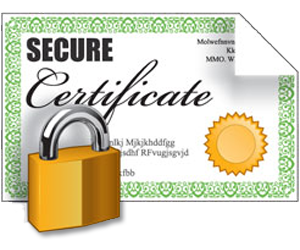Overview
See below a list of commands, commonly used when working with certificates and troubleshooting SSL.

Read certificates
1. Read a PEM certificate
openssl x509 -in certificate.pem -text -noout2. Read a PFX/P12 certificate
keytool -list -v -keystore <keystore.pfx> -storetype PKCS12 -storepass <pass>
openssl pkcs12 -info -in <keyStore.pfx>3. Read a JKS Keystore
keytool -list -v -keystore <keystore.jks> -storetype JKS -storepass <pass>Note: depending on the “Entry type” field of each entry (PrivateKeyEntry or trustedCertEntry) you can deduce if your JKS is a keystore or truststore. A truststore would only contain trustedCertEntry entries
Convert certificates
4.Convert a JKS into a PKCS12 (all aliases)
keytool -importkeystore -srckeystore <keystore.jks> -srcstoretype JKS -deststoretype PKCS12 -destkeystore <keystore.p12>5.Converting a JKS into a PKCS12 (only one alias)
keytool -importkeystore -srckeystore <keystore.jks> -destkeystore <keystore.p12> -srcstoretype JKS -deststoretype PKCS12 -srcstorepass
<pass> -deststorepass <pass> -srcalias <alias> -destalias <alias> -srckeypass <keypass> -destkeypass <keypass> -noprompt6.Convert a PKCS12 into a PEM (with password)
openssl pkcs12 -in <cert.pfx> -out <cert.pem>Note: You can add -nocerts to only output the private key or add -nokeys to only output the certificates.
7.Convert a PEM certificate and private key into a PKCS12
openssl pkcs12 -export -out <certificate.pfx> -inkey <privateKey.key> -in <certificate.crt> -certfile <CACert.crt>8.Convert PEM to DER
openssl x509 -in <cert.pem> -inform PEM -out <cert.der> -outform DER9.Convert DER to DER
openssl x509 -inform der -in <certificate.cer> -out certificate.pemGenerate certificates
1.Generate a PEM cert and key
NOTE: This can be used when enabling ssl on Apache or any other webserver.
openssl req -x509 -newkey rsa:2048 -keyout key.pem -out cert.pem -days 365 -nodesTroubleshooting
10.Read a cert from a remote host
echo QUIT | openssl s_client -connect <domain.com:443>11.Simulate a client
openssl s_client -connect <domain.com:443> -showcerts -state -msg
openssl s_client -connect <domain.com:443> -showcerts -state -msg -CAfile <truststore.pem>12.Simulate a server clientAuth=False
openssl s_server -accept 443 -cert <server-cert.pem> -pass pass:<pass> -WWW -state -msg -tlsextdebug13.Simulate a server clientAuth=False
openssl s_server -accept 443 -cert <server-cert>.pem -pass pass:<pass> -WWW -state -msg -tlsextdebug -CAfile <truststore.pem> -Verify 114.Import a .pem certificate to a JKS truststore
openssl x509 -outform der -in cert.pem -out cert.der
keytool -import -alias cert.alias -keystore truststore -file cert.der